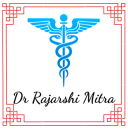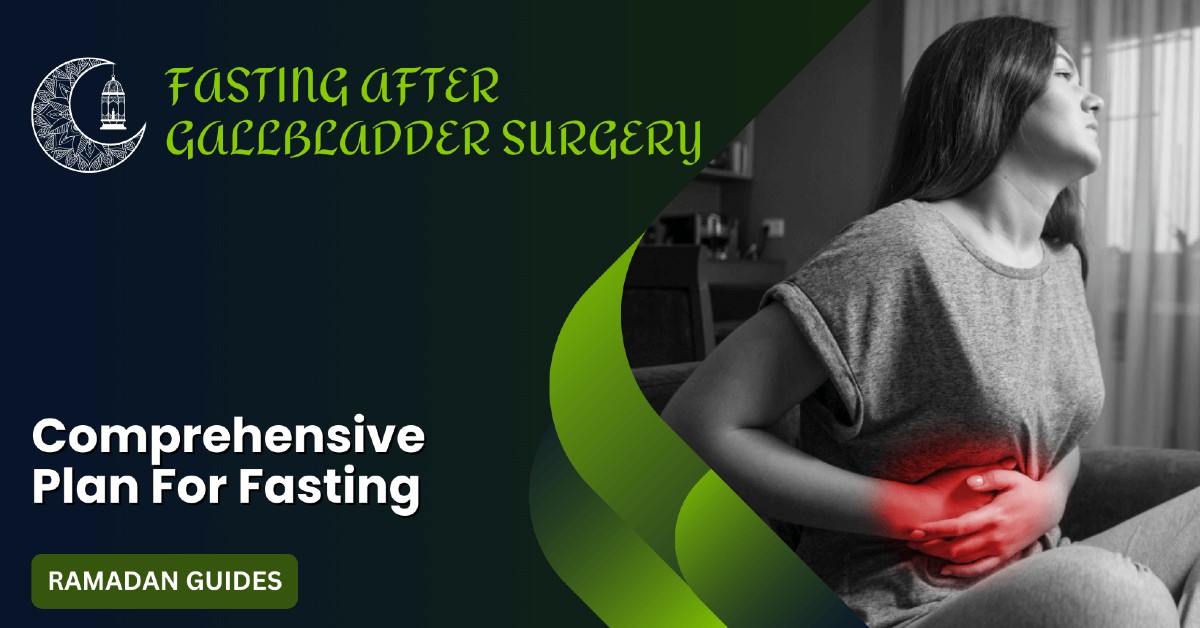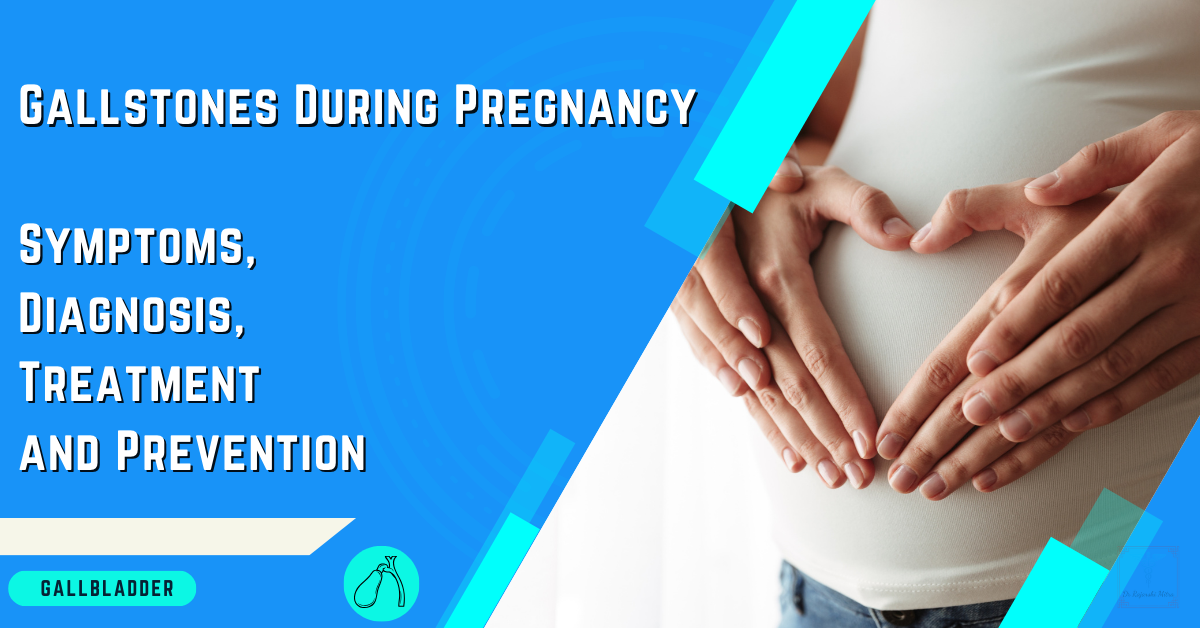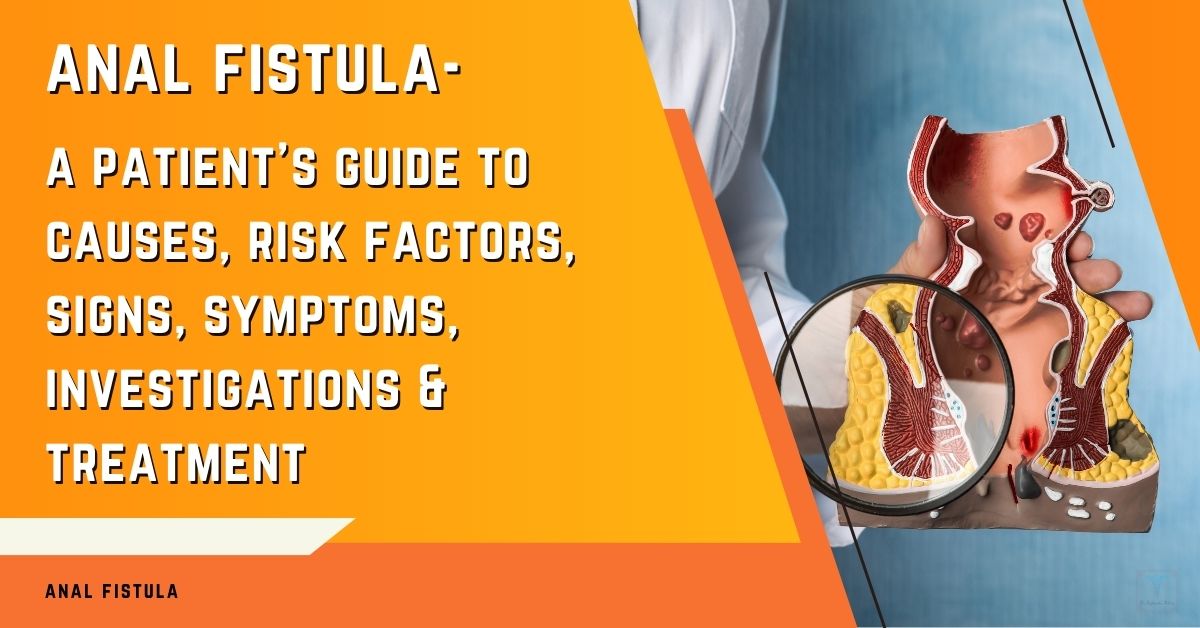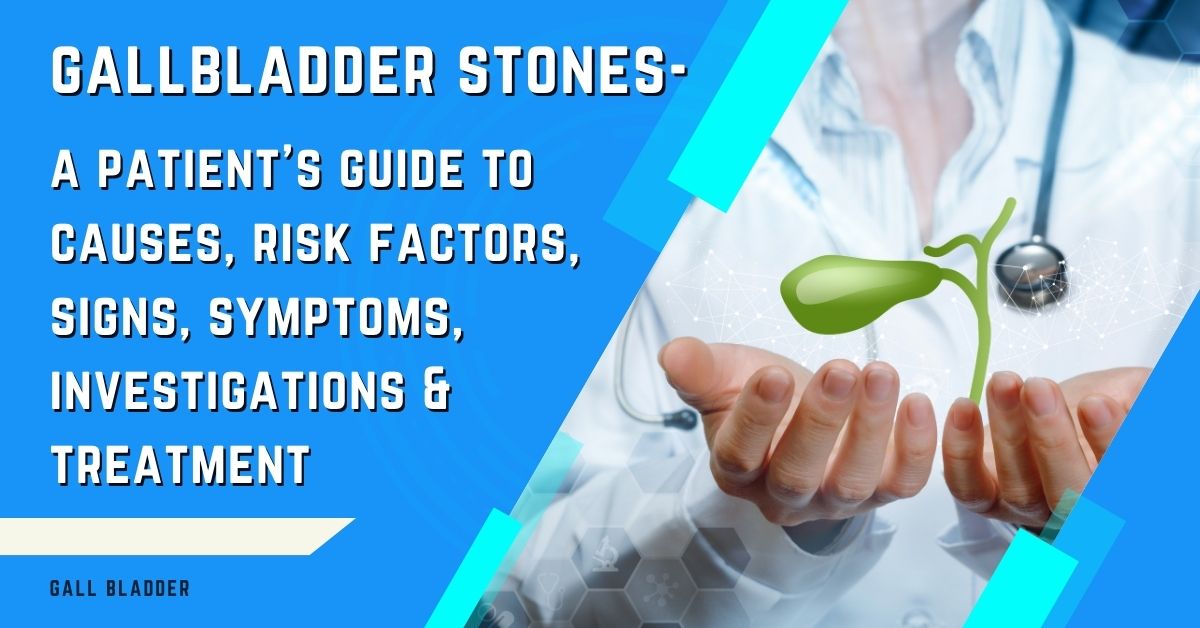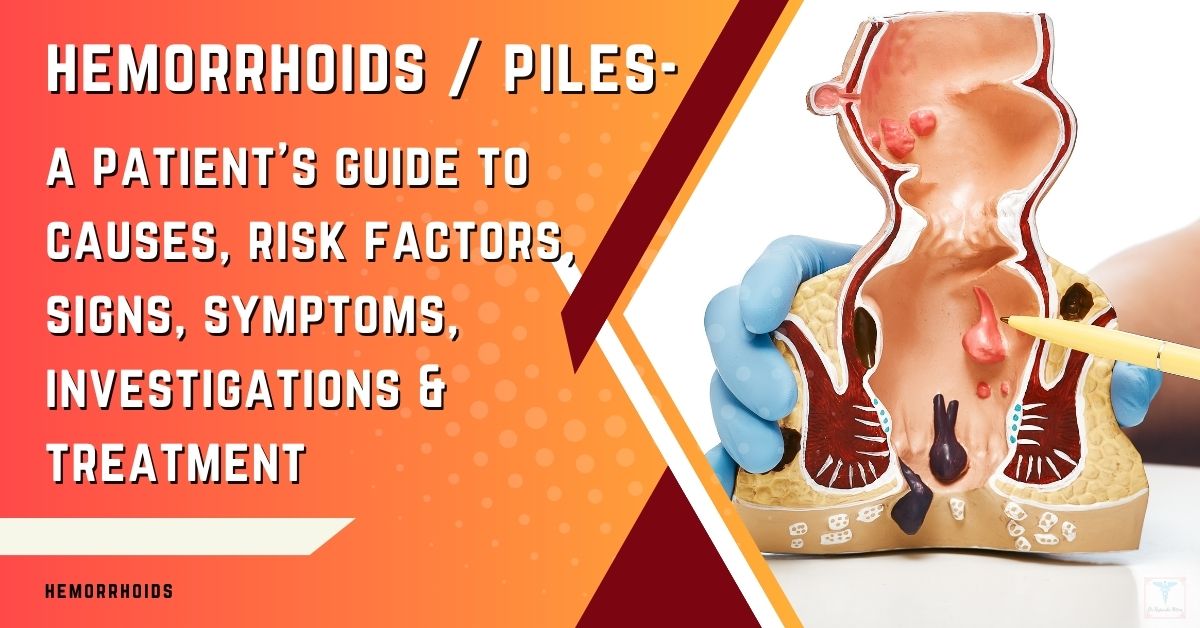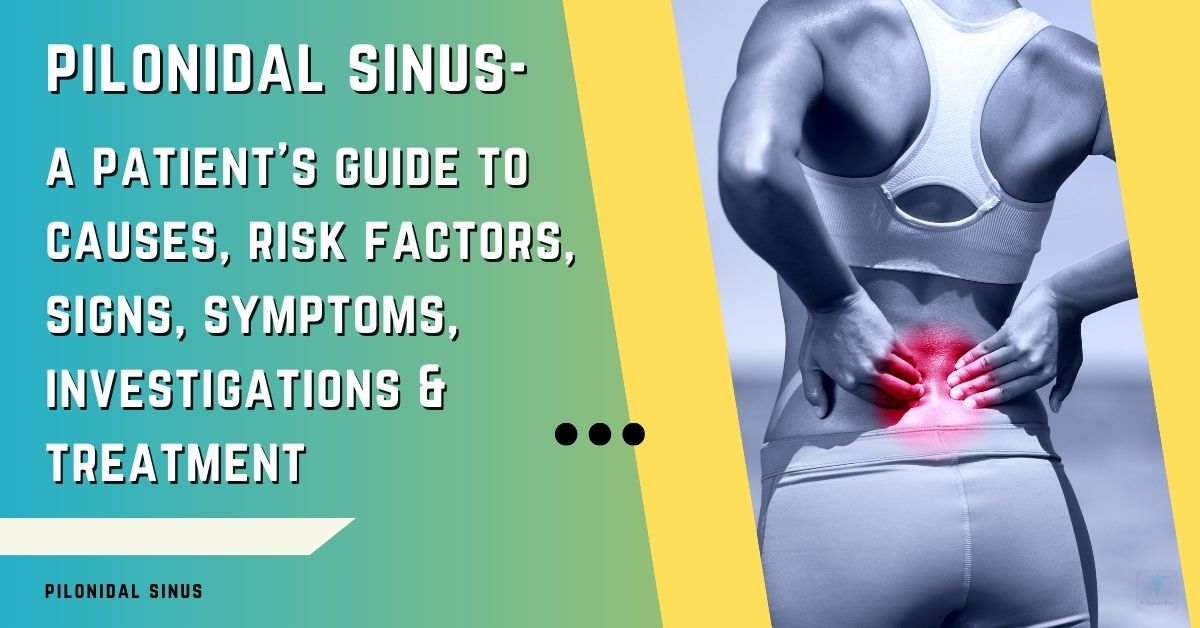Gallbladder issues, encompassing conditions like gallstones (cholelithiasis) and inflammation of the gallbladder (cholecystitis), are notably more common in women than in men. Studies indicate that women are approximately two to three times more likely to develop gallstones.
Several factors contribute to this increased risk.
These include age (risk increases with age), genetic predisposition, obesity, and rapid weight loss. Furthermore, certain ethnicities may have a higher prevalence of gallbladder disease.
A key risk factor unique to women is pregnancy, which can increase the likelihood of gallstone formation due to hormonal changes and decreased gallbladder emptying.
Other risk factors specific to women include the use of oral contraceptive pills and hormone replacement therapy.
Understanding these statistical patterns and risk factors is essential for the early identification and management of gallbladder issues in women.
You can find more information on gallstone risk factors from the National Institute of Diabetes and Digestive and Kidney Diseases (NIDDK) on their website NIDDK – Gallstones.
Hormonal Influences on Gallbladder Function
Hormones play a pivotal role in regulating gallbladder function, and this is especially evident in women.
Estrogen, a primary female sex hormone, influences cholesterol metabolism and can lead to an increased concentration of cholesterol in bile.
Progesterone, another key hormone, may slow down gallbladder emptying, causing bile to become more concentrated and increasing the risk of gallstone formation.
These hormonal fluctuations during menstruation, pregnancy, and menopause contribute to the increased prevalence of gallbladder issues in women. The impact of hormones often means that women may experience different or more intense symptoms than men, adding to the complexity of diagnosis and treatment.
You can read more about hormonal impacts on gallbladder health at the Cleveland Clinic’s website: Cleveland Clinic – Gallbladder Disease in Women.
Why this Guide is Important: A Surgeon’s Perspective
Hello, I’m Dr. Rajarshi Mitra, a laparoscopic surgeon with over 20 years of experience practicing in Abu Dhabi, UAE. I am a Fellow of the American College of Surgeons (FACS), and I have a special interest in the diagnosis and management of gallbladder disease.
My extensive experience in performing laparoscopic cholecystectomies (gallbladder removal surgery), along with my commitment to patient education, has led me to write this guide. As a surgeon, I’ve witnessed firsthand the impact of gallbladder issues on women’s health and well-being.
Overview of what this article will cover
This article is designed to serve as an informative resource for women seeking to understand gallbladder symptoms specific to their gender. We will look into the reasons why women experience gallbladder problems differently, explore the unique symptoms they might encounter, and discuss the diagnostic and treatment options available.
The aim is to empower women with knowledge so they can make informed decisions about their health and seek timely medical attention when necessary.
This guide covers everything from the prevalence and risk factors to specific treatment options, all through the lens of a seasoned laparoscopic surgeon.
By the end of this guide, you will have a clearer understanding of how gallbladder issues manifest in women and how they can be effectively addressed.
Common Gallbladder Symptoms in Women: An Overview

Classic Symptoms:
Right Upper Quadrant Pain (Location, Character, Duration)
Right upper quadrant (RUQ) pain is a hallmark symptom of gallbladder issues. This pain is typically located in the upper right portion of the abdomen, just below the rib cage. It can vary from a dull ache to a sharp, intense cramping sensation.
Often, the pain comes in waves, increasing in intensity and then subsiding. This pattern is known as biliary colic. The pain may radiate to the back or right shoulder blade.
The duration of the pain is also variable, it may last from a few minutes to several hours, usually between 30 minutes to several hours. It’s important to note the timing and characteristics of the pain, particularly if it occurs after meals, especially those high in fat.
The pain is caused by the gallbladder contracting against a blockage, often due to gallstones.
Nausea and Vomiting
Nausea and vomiting often accompany gallbladder problems, especially during acute episodes of pain. The severity of nausea and vomiting can range from mild queasiness to intense retching and the inability to tolerate food or liquids.
These symptoms result from the body’s response to pain and inflammation in the gallbladder. The exact mechanism is complex but is thought to involve signals between the digestive system and the brain.
When a woman experiences nausea and vomiting, especially along with RUQ pain, it is highly suggestive of gallbladder involvement and should prompt further investigation.
Bloating and Indigestion
Bloating and indigestion are common yet often overlooked symptoms of gallbladder disease. Many women may experience persistent abdominal fullness or a sense of being uncomfortably bloated, even if they have not eaten a large meal.
Indigestion, characterized by discomfort or pain in the upper abdomen, might also be present. These symptoms can occur because the gallbladder’s inability to properly process fats and bile leads to digestive disturbances.
Although bloating and indigestion can be caused by other factors, when these symptoms are persistent or associated with other gallbladder symptoms, it is important to consider gallbladder disease as a possible cause.
Intolerance to Fatty Foods
One of the most telling signs of gallbladder dysfunction is an intolerance to fatty foods. Because the gallbladder’s primary role is to help digest fats, when it isn’t functioning properly, fatty meals can trigger a range of uncomfortable symptoms.
After eating greasy or fried foods, women with gallbladder problems often experience a combination of symptoms, including right upper abdominal pain, nausea, bloating, and indigestion.
This intolerance is due to the gallbladder’s decreased ability to release bile needed for fat digestion. As a result, fatty foods remain undigested in the gut, causing these adverse symptoms. A strong dislike or inability to tolerate fatty foods is therefore a significant clue to a potential gallbladder issue.
Atypical or Less Common Symptoms in Women
Back Pain
While right upper quadrant pain is classic, gallbladder issues can sometimes manifest as back pain, which can be easily mistaken for musculoskeletal issues.
The pain is usually located in the upper back or between the shoulder blades, often on the right side, which is due to nerve pathways that connect the gallbladder to the back. This type of pain may be constant or intermittent, and it may or may not be associated with other gallbladder symptoms.
However, unexplained back pain, especially if it occurs after meals or in conjunction with other digestive issues, should prompt further investigation into potential gallbladder involvement.
Shoulder Pain
Shoulder pain, particularly in the right shoulder, can be another less typical but significant symptom of gallbladder disease.
This pain is often referred to as ‘referred pain’ because it originates in one area (the gallbladder) but is felt in another (the shoulder). The pain can be dull or sharp, and sometimes it may be accompanied by stiffness or discomfort.
It is important for women to recognize that shoulder pain, especially if it’s not linked to a direct injury, could be a sign of gallbladder issues, particularly when experienced alongside other digestive symptoms.
Heartburn or Chest Pain
Heartburn or chest pain is sometimes misinterpreted as a cardiac issue, but it can be related to gallbladder dysfunction.
This pain typically stems from the irritation caused by the gallbladder, or the reflux of bile into the esophagus and can lead to discomfort in the chest area.
Heartburn associated with gallbladder problems might be exacerbated by fatty meals and may not respond to typical antacids.
So, although it is important to always rule out cardiac causes for chest pain first, one should also be aware of the potential for gallbladder involvement, especially if other gallbladder symptoms are present.
Symptoms that mimic other conditions
The range of symptoms associated with gallbladder issues can often mimic other conditions, making it difficult to pinpoint the diagnosis.
For example, abdominal discomfort can be attributed to gastric problems or irritable bowel syndrome, while back and shoulder pain can be mistaken for musculoskeletal injuries. Also, some women may experience non-specific symptoms like fatigue or general malaise.
This wide variation in symptoms highlights the importance of considering gallbladder disease as a differential diagnosis, especially when other conditions have been ruled out.
A detailed history and thorough medical evaluation is essential for an accurate diagnosis.
Gender-Specific Considerations in Gallbladder Disease
Hormonal Factors and Their Impact
Estrogen, Progesterone, and Gallbladder Function
As previously mentioned, hormones significantly influence gallbladder function, particularly in women.
Here’s a breakdown of how estrogen and progesterone play a role:
- Estrogen: Increases cholesterol levels in bile, making it more prone to forming gallstones. Can reduce the ability of the gallbladder to contract properly, leading to bile stasis (bile not moving freely) and gallstone formation.
- Progesterone: Relaxes smooth muscle, which can slow down gallbladder emptying. Promotes bile stasis, increasing the risk of sludge formation and, subsequently, gallstones. Contributes to the imbalance of bile components, promoting stone formation.
The combined effects of these hormonal changes are especially pronounced during specific times of a woman’s life, making them more susceptible to gallbladder problems.
Pregnancy and Gallbladder Issues
Pregnancy is a period of significant hormonal change that greatly increases the risk of gallbladder issues.
Here’s how:
- Elevated Estrogen Levels: During pregnancy, estrogen levels surge, which raises cholesterol levels in bile, contributing to gallstone formation.
- Increased Progesterone: The elevated progesterone levels slow down gallbladder emptying, leading to bile stasis.
- Physical Changes: The expanding uterus can physically compress the gallbladder, further slowing down its emptying.
- Dietary Changes: Many women experience changes in appetite and food preferences during pregnancy, which may affect the composition of bile.
These factors combine to make pregnant women particularly vulnerable to gallstone formation and related complications. Symptoms may manifest or worsen during pregnancy.
You can find more information on gallbladder issues during pregnancy on the American Pregnancy Association website: American Pregnancy Association – Gallbladder Problems During Pregnancy.
Menopause and Increased Risk of Gallstones
Menopause brings about significant hormonal shifts that affect a woman’s susceptibility to gallbladder disease:
- Declining Estrogen Levels: After menopause, estrogen levels decline, but the changes can disrupt bile composition, leading to an increase in cholesterol concentration in bile.
- Hormone Replacement Therapy (HRT): The use of HRT can further alter hormone levels, impacting gallbladder function.
- Age-Related Changes: The gallbladder’s ability to contract and empty may decrease with age, contributing to the risk of gallstone formation.
- Increased Risk of Complications: Women experiencing menopause or post-menopause face a higher risk of gallstone complications, like acute cholecystitis.
It is thus very important for women undergoing menopause to be aware of the potential of developing gallbladder issues.
The Influence of Lifestyle and Diet
Dietary habits in women
Dietary habits significantly impact gallbladder health, and specific dietary patterns in women can increase their risk of gallbladder disease:
- High Intake of Saturated and Trans Fats: Diets rich in saturated and trans fats can elevate cholesterol levels in bile, increasing the likelihood of gallstone formation.
- Low Fiber Intake: A diet low in fiber can lead to altered bile composition, contributing to gallstone formation and impaired digestive function.
- Irregular Meal Patterns: Irregular eating habits and skipping meals can affect gallbladder function.
- Fasting: Long periods of fasting can increase the risk of gallstone formation due to bile stasis in the gallbladder.
- Processed Foods: A diet heavily reliant on processed foods can contribute to imbalances in bile composition and overall poor health.
Weight Fluctuations and Gallbladder problems
Weight management and gallbladder health are closely linked:
- Obesity: Being overweight or obese is a significant risk factor for gallstone formation.
- Rapid Weight Loss: Drastic weight loss, whether through crash diets or bariatric surgery, can increase the risk of gallstone formation.
- Yo-Yo Dieting: Repeated cycles of losing and regaining weight can also increase the risk of gallbladder problems.
- Insulin Resistance: Obesity often leads to insulin resistance, which has been linked to an increased risk of gallstones.
Maintaining a stable and healthy weight is important for optimal gallbladder function.
Impact of oral contraceptives
Oral contraceptive pills can impact gallbladder health because of hormonal changes:
- Increased Estrogen Levels: Oral contraceptives often contain estrogen, which elevates the cholesterol concentration in bile, increasing the risk of gallstones.
- Reduced Gallbladder Emptying: Hormonal changes induced by oral contraceptives can slow down gallbladder emptying, making bile more concentrated and prone to form gallstones.
- Duration of Use: Long-term use of oral contraceptives may increase the cumulative risk of developing gallstones.
Genetic Predisposition in Women
Genetic factors may play a role in susceptibility to gallbladder disease:
- Family History: Women with a family history of gallbladder disease are at an elevated risk of developing the condition.
- Specific Genes: Research has identified certain genes that may be associated with an increased risk of gallstone formation.
- Ethnicity: Some ethnic groups have a higher prevalence of gallstones, suggesting a genetic predisposition.
Though genes are not modifiable, being aware of one’s family history of gallbladder disease can help in early detection and preventive measures.
Diagnosing Gallbladder Problems in Women
Initial Evaluation
Detailed History and Physical Examination
The first step in diagnosing gallbladder problems involves a comprehensive evaluation by a healthcare professional.
This usually consists of:
- Patient History:
Detailed questioning about symptoms: location, duration, character of pain, and any associated symptoms like nausea, vomiting, or indigestion.
Assessment of dietary habits, especially intolerance to fatty foods.
Information about family history of gallbladder disease.
Current medications and other medical conditions.
History of pregnancies and use of oral contraceptives or hormone replacement therapy.
- Physical Examination:
Palpation of the abdomen: Checking for tenderness in the right upper quadrant.
Murphy’s Sign: A specific test to evaluate for gallbladder inflammation. This involves pressing below the right rib cage while the patient takes a deep breath.
Assessment for signs of jaundice: Yellowing of the skin and eyes, which can indicate a blockage in the bile ducts.
General health assessment.
Imaging Techniques
Abdominal Ultrasound (First-line investigation)
Abdominal ultrasound is often the first imaging test used to evaluate the gallbladder:
- Non-invasive: It’s a safe and non-invasive procedure.
- Visualization: It provides clear images of the gallbladder, allowing detection of gallstones, sludge, and wall thickening.
- No Radiation: Ultrasound does not use radiation, making it safe for pregnant women.
- Accessibility: It is widely available and relatively inexpensive.
- Limitations: May not always visualize small stones or problems in the bile ducts.
HIDA Scan
A HIDA (hepatobiliary iminodiacetic acid) scan is a nuclear medicine test that can provide additional information about the gallbladder’s function:
- Radioactive Tracer: A radioactive tracer is injected intravenously, and its movement through the liver, gallbladder, and bile ducts is tracked using a special camera.
- Gallbladder Function: Helps assess how well the gallbladder is contracting and emptying bile.
- Bile Duct Blockage: Can identify blockages or obstructions in the bile ducts.
- Acute Cholecystitis: Useful in diagnosing acute inflammation of the gallbladder.
- Limitations: Uses radiation and may not be as readily available as ultrasound.
CT Scans and MRIs
Computed Tomography (CT) scans and Magnetic Resonance Imaging (MRI) are more advanced imaging techniques used for specific cases:
- CT Scans:
Provide detailed cross-sectional images of the abdomen.
Useful in diagnosing complications like perforation or abscess formation.
Uses radiation, so it is not the first investigation to be used.
- MRIs:
Offer excellent soft-tissue resolution and are very useful for imaging bile ducts.
Can help identify conditions like choledocholithiasis (stones in the bile ducts) or cholangitis (infection in the bile ducts).
No radiation.
- When to Use: These tests are generally used when ultrasound or HIDA scans are insufficient or when more detailed imaging is necessary.
Blood Tests
Liver Function Tests
Liver function tests (LFTs) are important in assessing the health of the liver and bile ducts:
- Bilirubin: Elevated bilirubin levels can indicate a bile duct blockage.
- Alkaline Phosphatase: Elevated alkaline phosphatase can be suggestive of a bile duct obstruction.
- Transaminases (ALT, AST): Elevated transaminases can indicate liver inflammation or damage due to gallbladder problems.
- Purpose: Abnormal LFT results can support the diagnosis of gallbladder disease and its complications.
Amylase and Lipase (for pancreatitis)
Amylase and lipase are enzymes that are measured in the blood to evaluate the presence of pancreatitis:
- Gallstone Pancreatitis: Elevated amylase and lipase levels can indicate that gallstones have caused pancreatitis.
- Severe Abdominal Pain: These tests are especially crucial when patients present with severe abdominal pain that radiates to the back, a hallmark of pancreatitis.
- Confirming diagnosis: A very important test in any case of suspected gall stone pancreatitis.
When to seek specialist care- from a Laparoscopic Surgeon
Alarm signs that indicate an urgent need for surgery
It is important to consult with a laparoscopic surgeon if one has any of the following signs:
- Persistent, severe right upper quadrant pain that doesn’t subside with over-the-counter pain medication.
- Fever or chills along with abdominal pain.
- Jaundice (yellowing of the skin or eyes).
- Vomiting that won’t stop, especially if it’s combined with abdominal pain.
- Signs of infection, such as redness or swelling around the abdomen.
- Any sudden change in symptoms that causes concern.
- Previous history of gallstones with new or worsening symptoms.
- History of pancreatitis with any suspected episode of gallstones or gallbladder disease.
Treatment Options for Gallbladder Issues in Women
Lifestyle Modifications and Conservative Management

Dietary Adjustments
Diet plays a significant role in managing gallbladder issues. Here are some recommended dietary adjustments:
- Low-Fat Diet: Reduce the intake of fatty foods, particularly saturated and trans fats.
- High-Fiber Diet: Increase intake of fiber-rich foods like fruits, vegetables, and whole grains.
- Smaller, Frequent Meals: Eat smaller meals more frequently to avoid overloading the gallbladder.
- Avoid Trigger Foods: Identify and avoid foods that trigger gallbladder symptoms.
- Hydration: Drink plenty of water to maintain proper bile consistency.
Weight Management
Maintaining a healthy weight is essential for gallbladder health:
- Gradual Weight Loss: If overweight or obese, aim for gradual weight loss.
- Avoid Crash Dieting: Avoid rapid weight loss, as it can increase gallstone risk.
- Regular Exercise: Incorporate regular physical activity into your routine.
- Healthy Weight Maintenance: Maintain a healthy weight over the long term.
Medical Treatment
Pain Relief Medications
Over-the-counter or prescription pain medications can help manage the pain associated with gallbladder issues:
- Nonsteroidal Anti-inflammatory Drugs (NSAIDs): Medications like ibuprofen or naproxen can relieve mild to moderate pain.
- Prescription Painkillers: Stronger pain medications may be needed for severe episodes of pain.
- Antispasmodics: Medications that can help relax the smooth muscle in the gallbladder to ease pain.
- Antiemetics: Medications to alleviate nausea and vomiting.
Ursodeoxycholic acid (for gallstone dissolution in specific cases)
Ursodeoxycholic acid (UDCA) is a medication that can be used in specific cases:
- Small Cholesterol Stones: Used to dissolve small cholesterol gallstones in certain cases.
- Long Treatment Period: It is important to know that it can take a long time to work and it doesn’t always dissolve all stones.
- Not suitable for all cases: Not suitable for large stones or stones that contain calcium.
- Recurrence: There can be recurrence of stones after stopping the medication.
- Other Considerations: UDCA is not effective for symptomatic relief or when complications of gallstones have occurred, where a laparoscopic cholecystectomy would be a more appropriate treatment.
Surgical Intervention: Laparoscopic Cholecystectomy
Why Laparoscopic Surgery is the gold standard for gallbladder removal
Laparoscopic cholecystectomy is the preferred surgical method for gallbladder removal, offering several advantages:
- Minimally Invasive: It uses small incisions and specialized instruments.
- Reduced Scarring: Small scars compared to traditional open surgery.
- Less Pain: Less postoperative pain than open surgery.
- Faster Recovery: Shorter hospital stay and recovery time.
- Lower Risk of Infection: Reduced risk of wound infections.
- Improved Cosmesis: Small scars have a better cosmetic outcome.
You can find out more about laparoscopic cholecystectomy on the Mayo Clinic website: Mayo Clinic – Laparoscopic Cholecystectomy.
What to expect during a Laparoscopic Cholecystectomy?
A laparoscopic cholecystectomy typically involves the following:
- General Anesthesia: You will be given general anesthesia before the procedure.
- Small Incisions: The surgeon will make several small incisions in the abdomen.
- Laparoscopic Instruments: A camera and specialized instruments are inserted through the incisions.
- Gallbladder Removal: The gallbladder is carefully detached and removed through one of the incisions.
- Closure: The incisions are closed with stitches or surgical glue.
- Duration: Procedure usually takes about 1 hour to perform, but this can vary.
Recovery and aftercare
Recovery from laparoscopic cholecystectomy is usually relatively quick:
- Post-operative care: Typically includes pain management and care of surgical wound.
- Hospital Stay: Usually a one-day or overnight hospital stay.
- Pain Management: Manage pain with prescribed or over-the-counter pain medications.
- Diet: Gradually resume a normal diet, starting with clear liquids and soft foods.
- Activity Restrictions: Avoid heavy lifting and strenuous activity for a few weeks.
- Follow-Up: Attend follow-up appointments with your surgeon to monitor your progress.
Benefits of choosing an experienced laparoscopic surgeon
Choosing an experienced laparoscopic surgeon can significantly impact your outcome:
- Surgical Proficiency: They have a higher level of expertise with fewer complications.
- Faster Procedure Time: Experienced surgeons can complete the procedure more efficiently.
- Minimal Complications: Reduced risk of complications such as bile duct injury.
- Personalised care: A more detailed pre and post surgical care will be provided by an experienced surgeon.
- Patient Comfort: They can give you more detailed explanations and help calm any anxieties that you may have.
Complications of Untreated Gallbladder Issues
Acute Cholecystitis
Acute cholecystitis is the inflammation of the gallbladder:
- Gallstone Obstruction: Often caused by a gallstone blocking the cystic duct.
- Symptoms: Severe, persistent RUQ pain, fever, nausea, vomiting.
- Infection: Can lead to infection of the gallbladder.
- Complications: May lead to perforation, abscess, or gangrene of the gallbladder, which are potentially life-threatening conditions.
- Treatment: Usually requires surgical removal of the gallbladder.
Gallstone Pancreatitis
Gallstone pancreatitis is inflammation of the pancreas caused by gallstones:
- Gallstone Migration: Gallstones can migrate to and block the pancreatic duct, leading to inflammation of the pancreas.
- Symptoms: Severe abdominal pain radiating to the back, nausea, vomiting, fever.
- Severity: Can range from mild to life-threatening.
- Hospitalization: Usually requires hospitalization for supportive care and treatment.
- Treatment: Removal of the gallbladder is recommended to prevent future attacks.
Cholangitis
Cholangitis is the infection of the bile ducts:
- Bile Duct Blockage: Often caused by a blockage of the bile ducts by gallstones.
- Symptoms: Fever, jaundice, right upper quadrant pain.
- Serious Condition: Can be a life-threatening condition if not treated promptly.
- Treatment: Requires antibiotics and drainage of the bile duct if there is a blockage.
Rare complications of long standing gallstones
Long-standing gallstones can cause some rare but potentially serious complications:
- Gallbladder Cancer: There may be a slightly higher risk of gallbladder cancer in people with chronic gallstones.
- Gallstone Ileus: A gallstone can migrate and cause a blockage in the small intestine.
- Fistula Formation: In some cases, a gallstone may erode and form a connection to another organ.
- Porcelain Gallbladder: A rare condition where the wall of the gallbladder becomes calcified, carrying an increased risk of cancer.
When to Seek Emergency Care
Seek emergency medical care immediately if you experience any of the following:
- Severe, persistent abdominal pain.
- High fever or chills.
- Jaundice (yellowing of the skin or eyes).
- Vomiting that you cannot stop.
- Signs of infection, such as redness or swelling around the abdomen.
- Sudden onset of severe pain or other alarming symptoms.
Prevention and Long-Term Management
Dietary Recommendations for Gallbladder Health
High-Fiber Diet
A high-fiber diet is important for gallbladder health:
- Promotes Regular Bowel Movements: Helps prevent constipation.
- Lowers Cholesterol: Can reduce cholesterol levels in bile.
- Sources of Fiber: Include fruits, vegetables, whole grains, legumes.
Healthy Fats
Choose healthy fats in moderation:
- Unsaturated Fats: Opt for unsaturated fats found in olive oil, avocados, nuts, and seeds.
- Limit Saturated Fats: Reduce intake of saturated fats found in red meat, full-fat dairy.
- Avoid Trans Fats: Eliminate trans fats found in processed foods.
Hydration
Drinking enough water is essential:
- Proper Bile Consistency: Helps maintain the consistency of bile.
- Overall Health: Important for overall health and well-being.
Importance of Regular Check-ups
Regular medical check-ups are beneficial:
- Early Detection: Allows for the early detection of gallbladder issues.
- Monitoring: Helps monitor existing conditions.
- Personalised care: Your doctor can give you lifestyle advice and dietary suggestions.
Managing Risk Factors
Managing risk factors is essential for prevention:
- Maintain a Healthy Weight: Aim for gradual weight loss if overweight.
- Hormonal Considerations: Be aware of hormonal influences and their impact on gallbladder health.
- Diet: Eat a balanced diet that is low in fats and high in fibre.
Empowering Women to Take Control of Their Gallbladder Health
Recap of key points
This guide has covered the following important points:
- Gallbladder issues are more common in women due to hormonal factors.
- Symptoms can vary widely and may be atypical in women.
- Early diagnosis is important.
- Lifestyle modifications and medical/surgical treatments are available.
Emphasis on seeking timely medical advice
It’s important to seek medical advice if you have any symptoms or concerns. Early diagnosis and treatment is very important in preventing complications.
Encouragement to adopt healthy lifestyle choices
Making healthy lifestyle choices can significantly reduce the risk of gallbladder problems.
About the Author
Dr. Rajarshi Mitra- Laparoscopic Surgeon
Credentials and Experience
Dr. Mitra holds prestigious credentials that underscore his commitment to excellence in surgical practice:
- Fellow of the American College of Surgeons (FACS): This designation recognizes his high standards of surgical competence and ethical practice.
- Over 20 years of active surgical practice: His extensive experience has provided him with a deep understanding of various surgical challenges and solutions.
- Specialized training in laparoscopic techniques: Dr. Mitra is proficient in the latest minimally invasive surgical procedures.
- Practicing in Abu Dhabi, UAE: He provides high-quality surgical care to the community in Abu Dhabi, UAE.
Contact Details and Practice Information
If you are experiencing symptoms of gallbladder issues, you can book an appointment with Dr. Mitra for expert consultation and care, using the following contact information:
Website: https://drrajarshimitra.com/appointment/
Phone: +971-509542791
Email: surgeon@drrajarshimitra.com
Address: https://openmylink.in/CAubp
NMC Specialty Hospital, Department of Surgery, Zayed The First St – Zone 1 – Abu Dhabi – United Arab Emirates.
By Dr. Rajarshi Mitra, Specialist Laparoscopic Surgeon, Abu Dhabi, UAE
Disclaimer: This article is intended for informational purposes only and should not be considered medical advice. Always consult with a qualified healthcare professional for diagnosis and treatment.
